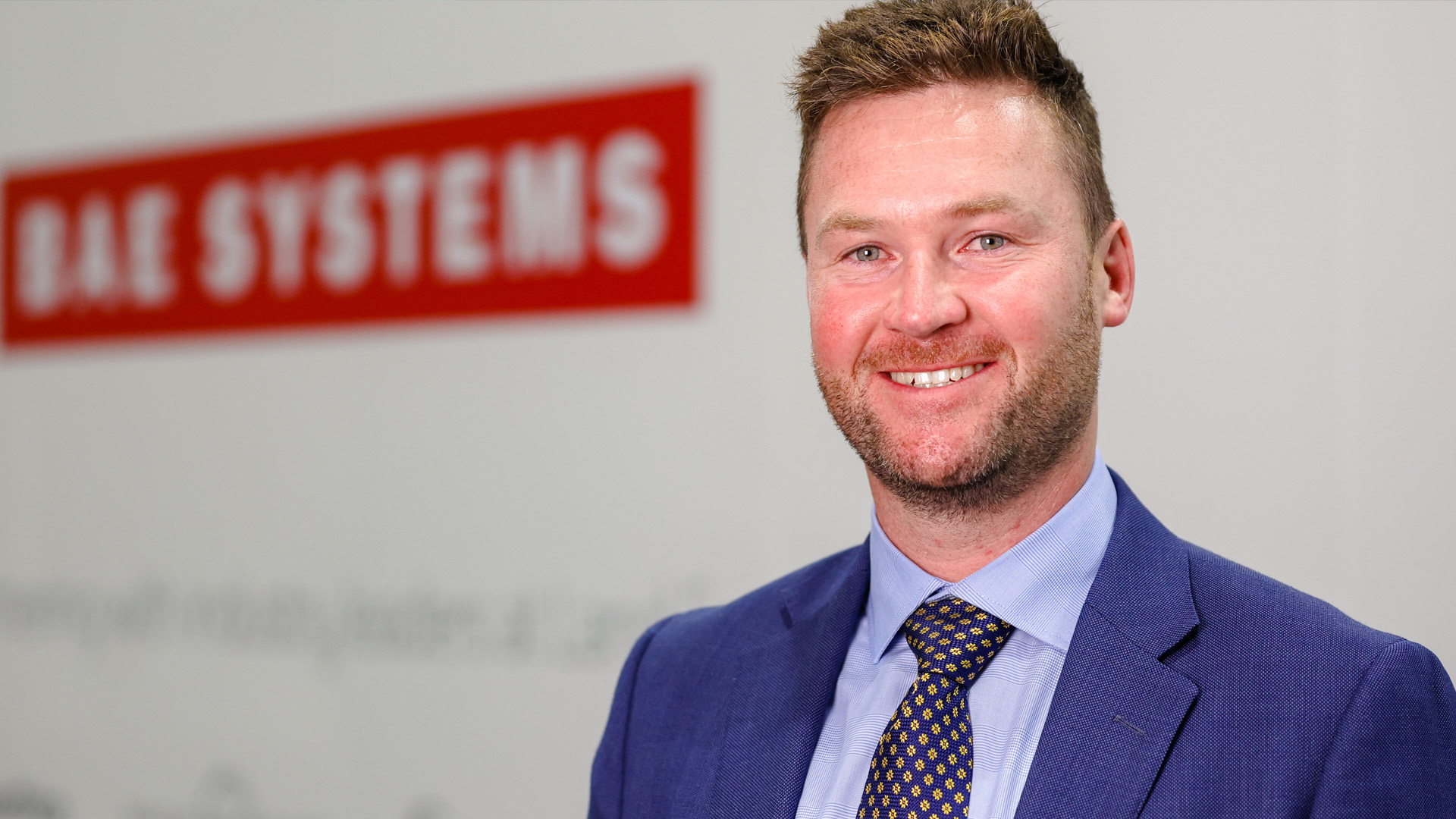There are over 600 veterans working in the business, and it gives me a great sense of purpose to work here. Over the four years I’ve been here [at BAE Systems], I’ve had a range of roles that embrace and support my growth, and with another three to four thousand people that we need to hire for upcoming roles, there really are infinite possibilities available.
Apr 2024
Meet Jeremy Satchell
A PROSPEROUS CAREER ACROSS DEFENCE AND CIVILIAN WORKFORCES WITH ONE MISSION: SUPPORT THE SECURITY AND PROSPERITY OF OUR NATION.
Jeremy’s 19-year career has spanned both defence and civilian workforces. Now, as Head of Industry Capability at BAE Systems Australia and an Army Reservist, Jeremy utilises the skills he’s learned for a great ambition: to support the security and prosperity of our nation.
Growing up on a sheep farm in a small Victorian country town, Jeremy always knew he wanted to be part of something important.
He had always been a people-oriented person, gravitating towards leadership roles at school and sporting activities. He loved to lead, guide and influence those around him toward common goals.
While only one member of his family had ever been in the defence forces, Jeremy had a fascination with military history and a passion for adventure. So, when defence force recruiters came to the area, Jeremy paid them a visit.
“The opportunities that were presented to me were amazing, and I felt that there would be no greater honour than to use my leadership abilities to lead Australian soldiers,” Jeremy reflected. “And that’s when I joined the Australian Defence Force Academy (ADFA).”
After passing all the rigorous entry requirements, Jeremy spent his three years at ADFA developing the skills and attributes needed to lead a team of soldiers.
“The Academy is a high-performance environment that was packed with amazingly talented people,” said Jeremy. “I made friends for life and learned skills which would set me up for life”.
After ADFA, Jeremy spent one year at the Royal Military College, Duntroon, conducting specific Army training, eventually graduating into the Royal Regiment of Australian Artillery. Regimental training followed graduation and eventually he landed in his first appointment at the 16th Air Defence Regiment, in Woodside, South Australia.
“It was my choice to come to South Australia. While many of my friends were choosing Queensland or the Northern Territory, I felt like I could carve out a unique career here and there were some amazing opportunities available,” commented Jeremy.
This appointment saw Jeremy take the lead as Troop Commander, including a deployment to Afghanistan in 2010 to establish the first Counter-Rocket Artillery and Mortar (C-RAM) capability in the country.
“My team and I were responsible for providing an element of the base defences, so it was imperative to ensure that the capability worked every time,” said Jeremy. “This meant very focused training in the lead up, including two months in the United States for equipment-specific training.”
After maintaining a one hundred percent efficiency at the base over the six-month period, Jeremy returned to Woodside and married his love Stacey, and took a role training future contingents of the C-RAM capability.
Four days after the birth of their first child in 2013, Louise, the family packed up for a two-year posting in Puckapunyal as an Instructor in Gunnery at the School of Artillery. Not one to do things by halves, their second child, William was born 3 weeks after arriving in England , where the family had moved for Jeremy to undertake the role of Australian exchange instructor for the Royal Military Academy Sandhurst (RMAS).
“It can be quite hard to move away from family and friends, particularly with a newborn. It does take a special kind of resilience from the whole family,” Jeremy reflected. “But we received an enormous amount of support, and it allowed us to have space as a family and explore Europe and the United Kingdom in our spare time. At work, I was able to compare the Australian way of doing things with an alternate which added a unique perspective and was immensely interesting,” he added.
After two years in the United Kingdom, and now as a family of four, they returned home to Adelaide and the 16th Regiment for another tour.
As an Adjutant, Jeremy’s role was the training and mentoring of junior officers and supporting the Commanding Officer. But as time progressed, it was becoming clear that another move would be imminent for the family.
“That’s when we decided to stay in Adelaide, and that it was time for me to transition to a civilian career,” said Jeremy. “I was lucky enough to join the business of a fellow ADFA graduate which made that first step of transition relatively easy for me,” he added.
However, Jeremy also reflected that there was a sense of loss that he had to process through that transition.
“I felt like I lost a bit of my purpose during that time, so I joined the Army Reserves, volunteered for Soldier On, at my children’s school, and joined a footy club. These new activities helped me gain that sense of comradery as well as introducing some new forms of discipline and rigor, all things that became part of me during my time in the Army,” Jeremy noted.
Another factor that helped with Jeremy’s transition to the civilian workforce was an industry development role in the South Australian Government. Jeremy noted that it provided him with a sense of connection back to his previous career, and an understanding of the opportunities available for veteran skills outside the forces, as well as an ability to continue to support the security and prosperity of Australia.
With BAE Systems Australia a client of his at the time, it wasn’t long until Jeremy found a role in-house at the company, joining just as COVID struck.
Now Jeremy works in a new role, as the Head of Industry Capability. The Industry Capability Team’s focus is finding new ways to improve outcomes and increase efficiencies for customers and stakeholders.
“We’re responsible for industry engagement, supplier development and delivery of contractual obligations under the Global Supply Chain (GSC) Program and the Australian Industry Capability (AIC) Program,” said Jeremy.
“There are over 600 veterans working in the business, and it gives me a great sense of purpose to work here. Over the four years I’ve been here [at BAE Systems], I’ve had a range of roles that embrace and support my growth, and with another three to four thousand people that we need to hire for upcoming roles, there really are infinite possibilities available.”
Certainly, exciting times ahead for Jeremy, BAE Systems and South Australia’s defence industry.




